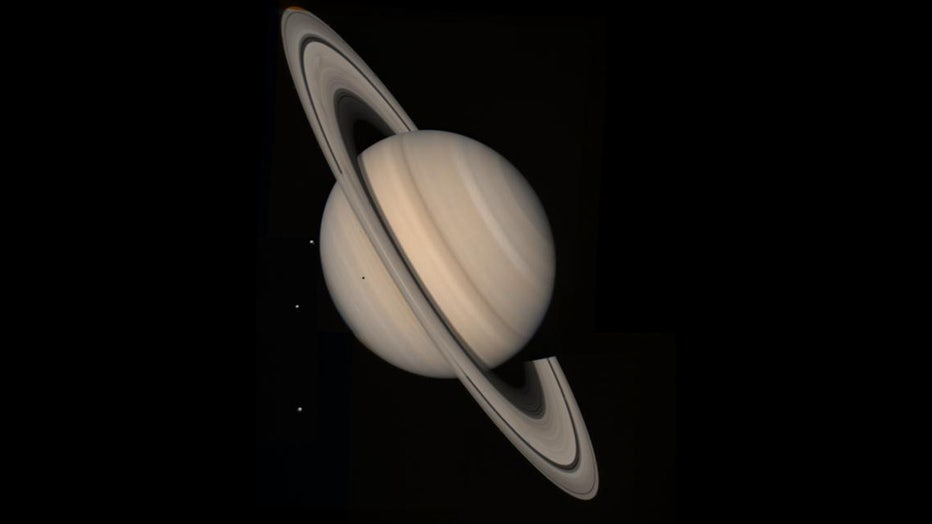Saturn's rings are disappearing, will be invisible from Earth in 2025

FILE - Cassini took images of Saturn in various filters as an engineering test on Oct. 21, 2002. (NASA/JPL/Southwest Research Institute)
Saturn's many rings are disappearing, and in 2025, the rings won't be visible from Earth, at least temporarily.
Saturn's ring system extends up to 175,000 miles from the surface of the planet making it clearly visible to stargazers on Earth, according to NASA. However, in 2025, the gas giant will tilt on-edge with Earth, making the huge rings seemingly disappear into an almost invisible line.

FILE - Images taken using red, green and blue spectral filters were combined to create this natural color view. The images were obtained with the Cassini spacecraft wide-angle camera on Nov. 4, 2009 at a distance of approximately 1.3 million kilomete (NASA/JPL/Space Science Institute)
HOW SPACEX AND COMMERCIAL FLIGHT ARE OPENING A UNIVERSE OF POSSIBILITIES ABOARD THE ISS: ASTRONAUTS
Despite the massive width of the structures, the vertical height of the rings is typically 30 feet, meaning around every 15 years when Saturn is seen perfectly from the side, the rings are nearly impossible to see, giving the illusion that they have disappeared.
The last time this astronomical event occurred — called a Saturnian equinox — was in September 2009. The next equinox is expected to take place on May 6, 2025, according to the European Space Agency.
The rings will again be visible once Saturn's tilt adjusts further, allowing astronomers on Earth to see the southern pole of the planet.
WATCH MORE FOX NEWS DIGITAL ORIGINALS HERE
Saturn, the solar system's second-largest planet, is famous for its rings, which were first discovered by Italian astronomer Galileo Galilei in 1610. The celestial hoops are made up of pieces of comets, asteroids, shattered moons, dust and ice, according to NASA. Some debris in the rings are smaller than a grain of sand while others are larger than mountains.
But the rings are dissipating at a rate that has alarmed scientists.
Gravity is pulling the material in Saturn's rings to the surface, and the loops may be completely gone in the next 300 million years, NASA said in 2018. "Saturn is losing its rings at ‘worst-case-scenario’ rate," the agency wrote at the time.

FILE - This true color picture was assembled from Voyager 2 Saturn images obtained Aug. 4 from a distance of 21 million kilometers (13 million miles) on the spacecraft's approach trajectory. Three of Saturn's icy moons are evident at left. They are, (NASA/JPL)
'SMOKING GUN EVIDENCE': WHAT A 'MONSTER' BLACK HOLE WAS DISCOVERED DOING THAT CONCERNED SCIENTISTS
"We’re still trying to figure out exactly how fast they are eroding," Dr. James O’Donoghue, a former NASA scientist said in April. "Currently, research suggests the rings will only be part of Saturn for another few hundred million years."
"This may sound like a long time, but in the history of the universe this is a relatively quick death," he continued. "We could be very lucky to be around at a time when the rings exist."
The rings "are relatively young" and could have formed during the era of the dinosaurs here on Earth, according to NASA.
Saturn also has 146 moons, the most out of any planet in the solar system.
Given that the planet is a massive ball consisting mostly of hydrogen and helium, the environment is not considered conducive to human life.

